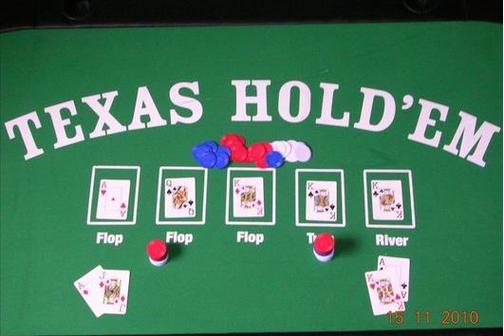Texas Hold’em Rule: A Comprehensive Guide for Beginners and Experts Alike
Are you new to the thrilling world of poker? Or perhaps you’re a seasoned player looking to refine your skills? Regardless of your experience level, understanding the rules of Texas Hold’em is crucial. This guide will delve into the intricacies of the game, providing you with a comprehensive overview of the Texas Hold’em rules.
Understanding the Basics
Before diving into the rules, it’s essential to have a basic understanding of the game. Texas Hold’em is a popular form of poker played with two to ten players. The objective is to make the best five-card poker hand using any combination of the two private cards dealt to you and the five community cards dealt on the table.
Here’s a quick rundown of the game’s structure:
| Game Stages | Description |
|---|---|
| Pre-Flop | Two private cards are dealt to each player. |
| Flop | Three community cards are dealt face-up on the table. |
| Turn | A fourth community card is dealt face-up on the table. |
| River | The final community card is dealt face-up on the table. |
Now that you have a grasp of the game’s structure, let’s dive into the rules.
Blinds and Antes
Before the cards are dealt, the game begins with two forced bets known as the small blind and the big blind. The small blind is typically half the size of the big blind. The player to the left of the big blind is responsible for placing the small blind, and the player to the left of the small blind places the big blind. These bets ensure that there’s always money in the pot.
In some variations of Texas Hold’em, an ante is also required. An ante is a forced bet placed by all players before the cards are dealt. This helps to increase the pot size and adds to the excitement of the game.

Dealing the Cards
After the blinds and antes are placed, each player is dealt two private cards, known as “hole cards.” These cards are dealt face-down, and only the player who receives them can see them. The dealer then shuffles the deck and cuts it before dealing the community cards.
Betting Rounds
There are four betting rounds in Texas Hold’em: preflop, flop, turn, and river. Let’s take a closer look at each round:
Pre-Flop Betting Round
The first betting round begins with the player to the left of the big blind. Players can call the big blind, raise, or fold. The big blind cannot raise, but they can call or fold.
Flop Betting Round
After the flop is dealt, the second betting round begins. Players can check, bet, call, raise, or fold. Checking means passing the action to the next player without betting. Betting means placing a wager into the pot. Calling means matching the current bet. Raising means increasing the current bet. Folding means dropping out of the hand.
Turn Betting Round
The third betting round follows the turn card being dealt. The rules are the same as the flop betting round.
River Betting Round
The final betting round occurs after the river card is dealt. The rules are the same as the previous betting rounds.
Showdown
After the final betting round, if there are two or more players remaining, a showdown occurs. Players reveal their hole cards, and the best five-card hand is determined. The player with the highest-ranking hand wins the pot. In the event of a tie, the pot is split among the players with the winning hands.
Hand Rankings
Understanding hand rankings is crucial to playing Texas Hold’em effectively. Here’s a list of the hands from highest to lowest:
- Royal Flush
- Straight Flush
- Four of a Kind
- Full House
- Flush
- Straight
